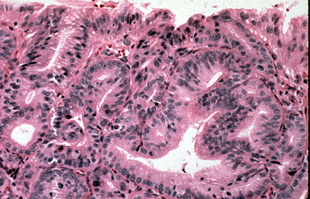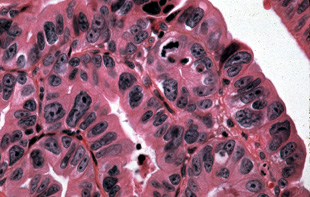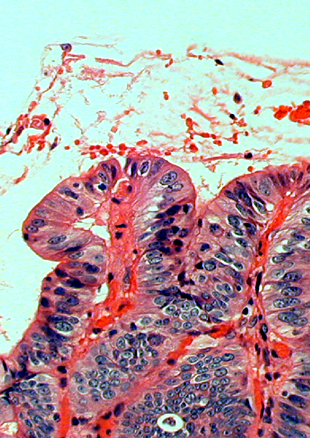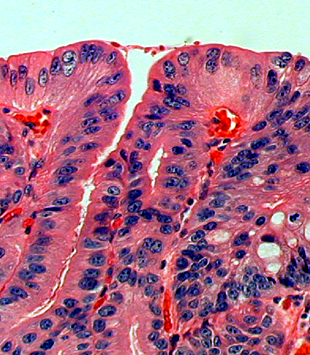Images of Barrett’s esophagus with High-grade Dysplasia
Diagnosing high-grade dysplasia is very important as many invasive procedures are initiated based on this diagnosis. We like to see loss of nuclear polarity ("rounding up" of nuclei) before making this diagnosis.

Low power view of distortion of crypt architecture.

The most important feature we look for: loss of nuclear polarity
Additional examples we would interpret as high-grade dysplasia.

